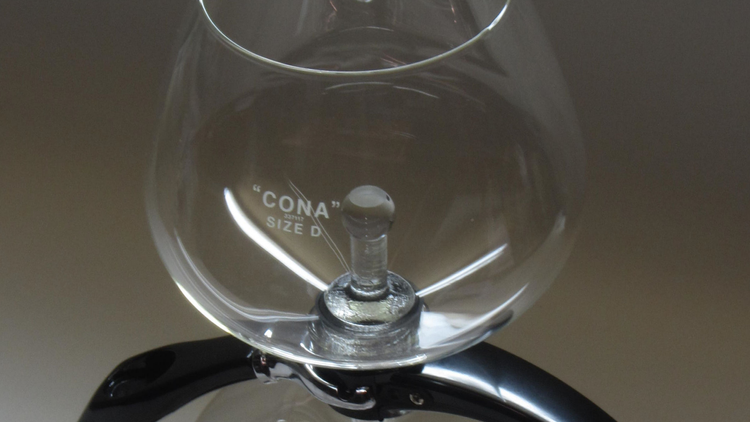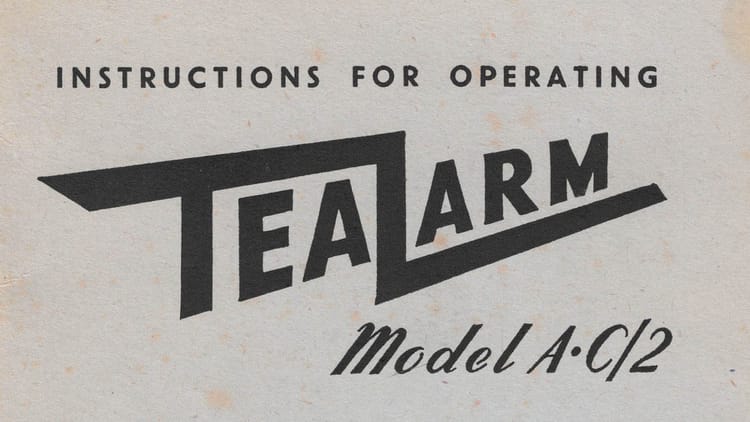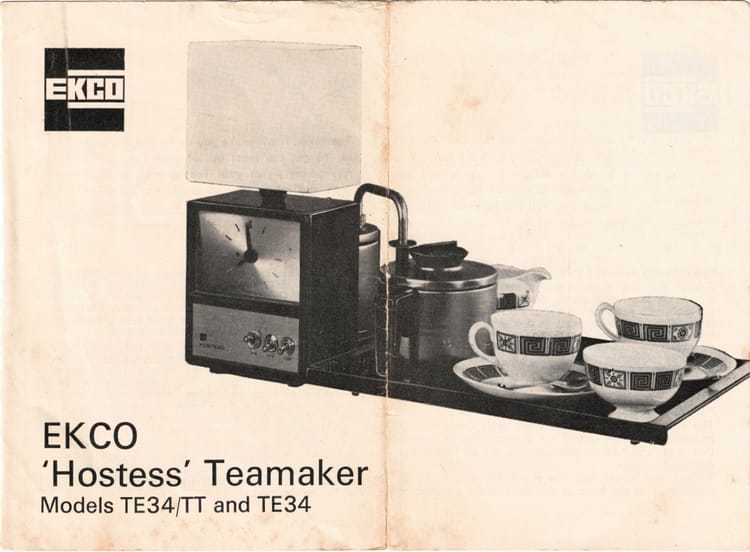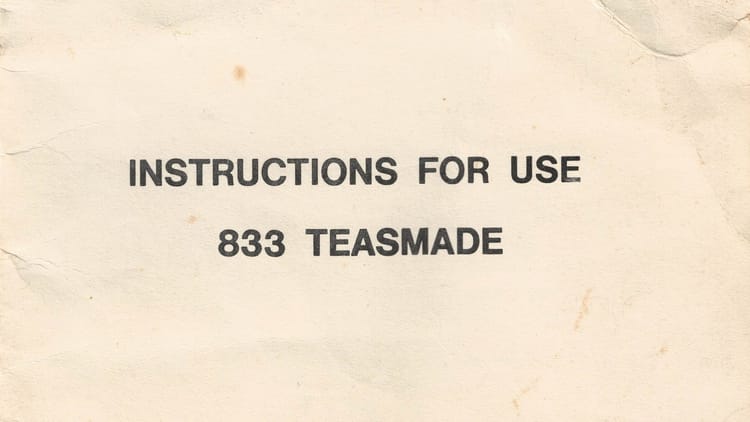Goblin Teasmade Numbering

by Doug Fennell
Most people might assume Goblin made around 4 or 5 different models, whereas they actually produced 34 plus variants over a period of approx 40 years. At first glance there appears to be little rhyme or reason to the model and serial numbers given to these appliances. However, a study reveals a pattern that has some meaning.
The first post-war Teasmade was the D20 made at Leatherhead. So why D and 20 ? Goblin had a number of factories in the UK including Northern Ireland making a diverse range of products. For accounting and service records it was important to identify the source of production. So I believe the final letter of LeatherheaD became the Teasmade D. Why 20? Well, few manufacturers start any new product at one, fearing resistance by wary customers. As for serial numbers, the same logic applies and I think the first one was probably numbered 1001.
Production continued through 1947 and 1948 with serial numbers applied in simple succession. In 1949 an improved version was launched as the D21 and the serial number continued throughout 1949 and 1950. In 1951 a new smaller ‘Popular’ version was launched to run alongside the D21. This was the D23. Batch production meant that these models continued the number series in-between the run of D21s. This batch numbering continued through the succeeding range of models D24, D25,B,C,D, D26, D28 until 1966. The unused numbers D22, D27, D29 and D30 were applied to development types. Then came a completely new model, the D31 and D32. Which were given new serial numbers as the existing models D25C and D were to remain in production until 1971. So I suspect the new models started again at 1001.They were not successful and during their short lives a major shift in production occurred in June 1967 when an extension to the Goblin factory at Castlereagh NI opened and all Teasmade production was transferred there. (Source: The Goblin Story published by Goblin (BVC) Ltd Leatherhead in 1969).
Now came a shift in thinking brought about by the move. Obviously D was no longer appropriate so a new prefix was needed. Goblin were always reticent about making public their Ulster connection so a code was needed that indicated N.I. but was not obvious. When Ulster was formed in 1922 it was known as the ‘eight counties’ and despite their abolition is still referred to today. So 8 became a useful prefix to replace D. Also, whether coincidentally or fortuitously the next model numbers in sequence would be 33 and 34. This gave Goblin the opportunity to introduce the ‘series’ system by which models produced simultaneously would share the same characteristics. So we have the 833M/833/834M/834/834B and the 835/835B/835C. The smaller models all used the same body and the larger 835 range used the same clock and their own rotary dial. The model number now had a meaning. The first digit indicated where made. The second digit indicated the series and the third digit was the type of appliance. 3 was the Popular no teapot, 4 was the Standard with teapot and 5 was De-Luxe with teapot and more functions plus tray. There then followed the four series. The 843/843B/844/844B. There was no 5 model in this series as the 835C continued in production. The characteristic of the four series was the clock face now printed on an aluminium facia behind a Perspex cover. Although the motor was still traditional until the small Swiss motor replaced it and the suffix B indicated this change. Next came the five series with a new variant. 2 indicated Basic – no clock, light or auto function just a kettle and teapot on a stand like the 815. So we had an 852 Basic, 853 Popular, 854 Standard, and 855 De-Luxe. The same characteristic of this series was the printed clock face, Swiss motor and rotary dial.
The only model that did not follow this pattern was the 815 of 1969 to 1974. This was a basic version for the hotel trade, was not intended for retail sale and had no auto function, clock or light. Serial numbers had little meaning as batches of models would be started at random numbers, usually 50/60/70/80 thousand. By now Goblin had been taken over by BSR and they sought to modernise and reduce the range. So the ‘0’ series was launched in 1977 with the 850 and 860 followed by the radio De-Luxe 870. The common characteristic was the same body of the 860 and 870 and the use of white extruded polymer rather than Bakelite which was expensive to make. Although the 860 and 870 continued in production a new model was introduced to replace the 850. And another numbering system was brought in. The Compact range had a year indicator in the model number. So the 882 was launched in 1982. It was replaced by the 883 in 1983.
The Goblin factory at Castlereagh closed in 1981 and Leatherhead closed in 1984. During 1985 Swan Housewares acquired the Goblin name and continued the existing model range but added 10,000 to the numbers. So there was a 10883, 10860 and 10870. Later they would introduce their own Compact model in 1987 – the 10887 and abolished serial numbers.
In 1989 Swan ceased production of all models and introduced their own Compact design, the D (01). As there was only one version, the 01 was not a model type but an indication to warehouse staff of the quantity of appliances in a carton.
During the late 1980s and into the 1990s there was considerable upheaval in the electric appliance industry due to economic pressure from the Far East. Domestic appliances became fashion items and the need for quality products diminished. In 1988 Swan Brand was acquired by the French company Moulinex and Bullpit & Sons (Swan Brand) ceased trading in May 1989. Littlewoods later bought the Swan brand name and the copyright to the word Teasmade. The Compact D (01) was sold only through the Littlewoods mail order catalogue. This continued until 1998 when sales fell below economic viability and all Teasmade production ceased. From the turn of the millennium until 2007 it was not possible to buy a Teasmade in the U.K.
In 2007 John Lewis commissioned a new design following public demand and the Swan STM 1 and radio version were on sale in 2008 and still are.
Although sales will never reach the heady heights of 1974, 10,000 a week, so long as they sell over 10,000 a year they are likely to remain at British bedsides for years to come.






Member discussion